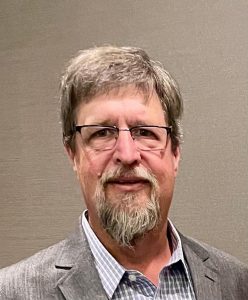Engineer Profile: Warren Clay, Canal Barge Company

“I started in June of 1980 when I stepped on my first towboat, and I’ve been here ever since,” said Warren Clay, shipyard project manager for Canal Barge Company. “Worked my way from a green deckhand all the way up to a project manager in the company.”
For the record, that adds up to 45 years Clay has spent in the maritime industry, all of it with Canal Barge Company (CBC). In 1980, Clay was looking for a job, and his wife’s uncle worked for Central Marine Service, a division of Canal Barge that offered towing services for Freeport Sulphur Company. The Meridian, Miss., native got his hands on an application and drove down to the Central Marine Service office in New Orleans to apply for a job.
“I walked through the door and told them I was looking for a job,” Clay said. “They said, ‘Well, we’re not hiring.’ I said, ‘Here’s my application. Can you tell me where there’s a job at? They said, ‘Well, we’ll put you on a boat in the morning.’ At two o’clock in the morning, I climbed onto a barge at the Florida Avenue bridge, and that was the start of my life on the river.”
Though he was hooked on the job, life aboard a towboat in those days was still hard, especially for someone with a young family. Clay worked a 20-for-10 schedule to start with, and in the 1980s, the only real way to stay in touch was via payphone. And those were hard to come by.
“It’s good for the single guys, but if you’re a family man, you’ve always got the family in the back of your head all the time, and it’s something they have to be able to adjust to,” Clay said. “You can’t fix everything while you’re on the boat.”
As a green deckhand in 1980, Clay said he made $36 a day.
“And that was big money,” he said. “I took care of me, a wife and a kid on thirty-six bucks a day.”
Clay soon moved up to the tankerman position, which he said earned him a $10 per day raise. He then spent time as a barge foreman and as a mechanic at the company’s office in Belle Chasse, La. In 1988, he went back to the river, first as an oiler, and then as an engineer, eventually earning his third assistant engineer unlimited license for the rivers and serving as the chief engineer aboard the mvs. Merrick Jones and Joseph Merrick Jones. He spent about 16 years as chief engineer aboard those vessels before going shoreside as a port engineer for Canal Barge in April 2006. In that role, Clay was in charge of maintenance for the company’s 6,000 hp. towboats. Earlier this year, Clay became shipyard project manager for Canal Barge. In that role, which is based in Paducah, Ky., he oversees CBC towing vessel repair jobs while in the shipyard.
“I do the majors,” Clay said. “When a boat comes in for overhauls, repowers, major hull work, stuff like that, I oversee that, anywhere from 30- to 120-day jobs.”
Reflecting on what it means to be an engineer, Clay said his schedule always mirrored the captain’s.
“If you had oil barge in tow, you went out there and worked on them,” he said. “You fueled the boat, fueled the barges, took care of everything from a blown light bulb down to a blown turbo or power pack. Everything on the boat went through you, except for the captain in the wheelhouse.”
Clay said it’s fair to describe him as an “old school” engineer.
“We didn’t have the schools like they have now to send people to to learn how to work on stuff,” he said. “It was the school of hard knocks. That’s where we came from.”
Clay counts Ronnie McDonald as his main mentor. He also mentioned port engineer David Hill and his fellow “old school” engineers, including Chuck Boyles and Henry Hill.
The way engineers do their job has changed a bit over the years, Clay said, especially with the adoption of Subchapter M. Electronics and emission systems are also more of a factor today compared to years past. In a way, though, modern communications is an asset, Clay said.
“You have more tools that help you talk to more people who can assist you in figuring out a problem,” he said, “so that makes it a lot easier. Back in the day, you fixed it. You were taught how to fix it, and you fixed it. It might’ve taken you all day long, but you did it. When I started out, there was no such thing as YouTube to help you figure out how to fix it. You pulled out the old manual, and you sat there squinting your eyes trying to read the fine print of where parts were located on what you were working on.”
And so, while the process may look different today versus when Clay started out in the 1980s, the key to success is the same.
“I tell these guys, if you can use your head like a sponge, that’s what the brain’s for,” Clay said. “If you can absorb and maintain 50 percent of what you do, you’re way ahead of the ballgame. You’ll be something. I’m always learning. I’m 67 years old. I’ve been in this business 45 years, and every day I go out on the boat, I’m learning something new.”



